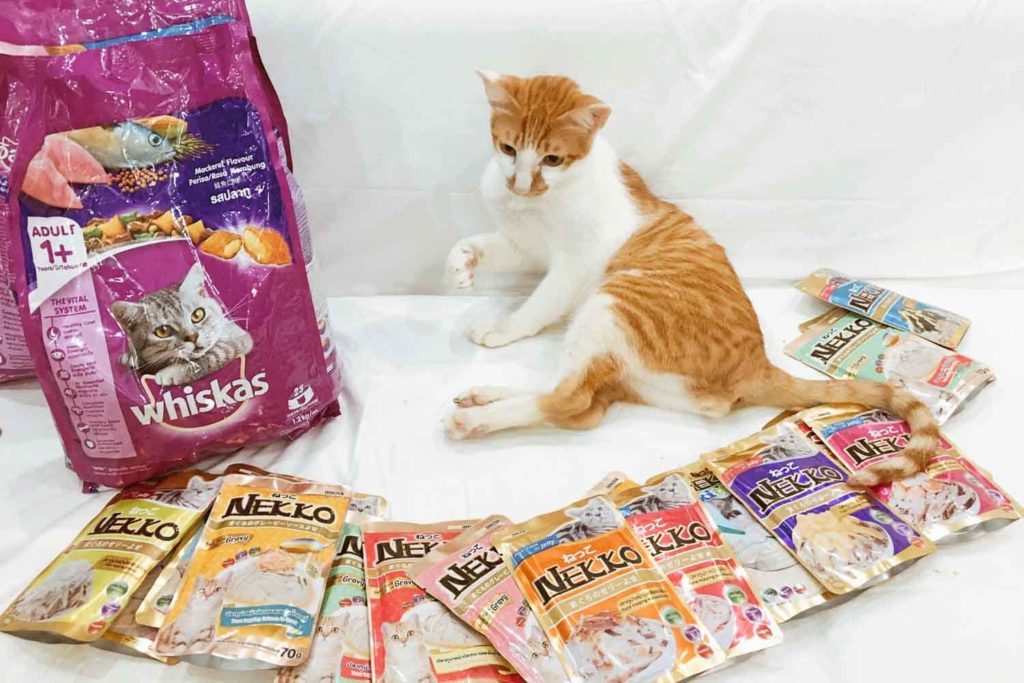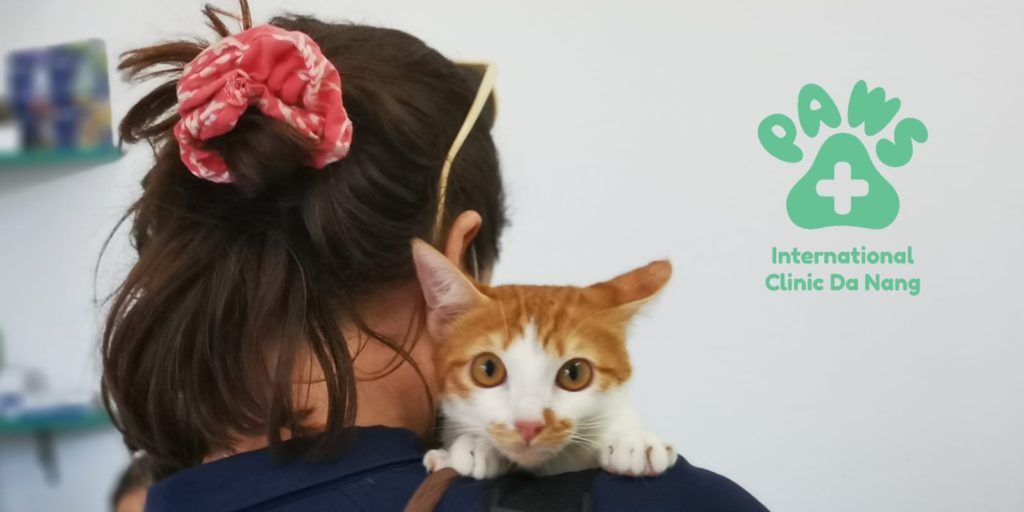
The cat is an obligate carnivore – this means that the domestic cat requires a diet of animal protein to stay healthy.
One reason for the requirement for animal protein is that cats need taurine – an essential amino acid naturally found in meat which cannot be synthesised in the body.
Another reason for needing protein is that the cat, unlike most other animals, uses protein as their primary energy source. Non-obligate carnivores (like humans) use carbohydrate as their primary energy source.
There are 6 key nutrients for a cat:
Water is the most important nutrient; an animal can survive longer without food than water. A loss of water over 11% can result in death of the animal.
Water is taken into the body via, food, drinking and the digestive process.
Proteins in the cat’s diet are required for growth, repair, and energy. Pig, cow, sheep, fish, rabbit, and several other food animals are typical sources of meat for cat food. The muscle tissue is comprised largely of protein.
Kittens will need a high protein diet to assist with additional growth. A cat also needs protein to repair damaged cells, for example injuries, surgery, bruising. Therefore, a cat with injuries may also require slightly elevated protein levels.
Carbohydrates are used as an energy source and to add bulk to a diet, however, they are more important to herbivores than carnivores. Pet food carbohydrates usually come from grains such as rice, wheat, corn, barley, and oats. Carbohydrates do not appear to have a major function or part in the cat’s diet. The cat possesses a modified biochemical process whereby protein is the primary energy substrate.
Fat is essential for:
All animals need some fat in their diet. Fat is broken down in the body into essential fatty acids and glycerol. Fats can be obtained from animal proteins such as chicken, beef, lamb, pork, or oily fish, they are also commonly found in the form of oils such as vegetable, safflower, and canola oil.
Fats and oils are lipids. Animals have fat in their body so when a cat eats another animal, they are consuming the fat too.
Plants contain oils in their seeds (for example, sunflowers) however plant lipids should not feature, to any extent, in a cat’s diet.
The function of lipids in the diet is to provide the body with the means to insulate itself, build up protection for vital organs, as a long-term energy storage substance and as a means for storing certain vitamins.
Minerals are required in tiny amounts to help regulate bodily functions such as development and maintenance of soft tissues and bones, healing, hydration, hormone regulation, and aiding the flow of oxygen in the blood stream.
Minerals can be found naturally through the ingredients in the pet food, or they can be synthetic and added to the food to meet daily requirements.
Parts of the cat’s food animal will contain more or less of the mineral element. For example, liver contains a considerable quantity of iron, and ground bone contains large quantities of calcium as well as phosphorous.
Milk products also contain large quantities of calcium. Calcium is vital to the growing kitten for bone formation, but cats are lactose intolerant, and so milk cannot be included in the diet.
Plant products also contain certain mineral elements, for example, cereal grains, dark green vegetable matter, bran and oil seeds are examples of sources of iron, magnesium, copper, and manganese.
Yeasts contain zinc, manganese, and magnesium as well as complete vitamins.
It is important to note that minerals are required in the diet for the cat in specific quantities and not “the more the better”. All the mineral elements will cause a toxic reaction if supplied in too great a quantity.
Bodily systems require vitamins to maintain growth and function. As with minerals, they are required in specific amounts, and too much of one vitamin can cause a toxic reaction.
Fat soluble vitamins (A, D, E, & K) are stored in the body’s fatty tissues and liver, water soluble vitamins, (B & C) are dissolved in the body’s water / fluids and can be flushed from the system on a regular basis, therefore they require a daily intake.
Dietary fibre is generally indigestible; however, it is vital to the cat’s diet as it bulks the faeces, absorbs water, and keeps the digestive tract healthy by allowing healthy gut bacteria to ferment. Too little fibre and an excess of carbohydrate or fat will inhibit healthy gut bacteria by allowing the growth of harmful bacteria.
The bulking action also slows the passage of foodstuffs through the gut. By slowing the time taken to pass through, both the small and large intestine can absorb more nutrients from a meal.
Bulking the faeces allows easy motions to be passed. If dietary fibre is limited below the required level, the cat will be constipated and very uncomfortable.
Beet pulp and rice bran are examples of fibre added to cat foods.
Homemade cat foods are a source of nutrient deficiency in the cat, as the balance of nutrients will be incorrect. Nutritional problems are unlikely in a cat who is fed a complete, commercial diet.
Nutritional problems can arise due to:
Malnutrition can be a problem for cats fed non- conventional diets. Cats fed exclusively on raw, freshwater fish, for example, can develop a thiamine deficiency. Those fed exclusively on liver may develop vitamin A toxicity.
Exclusively meat-based diets may contain excessive protein and phosphorus whilst being deficient in calcium, vitamin E, and micro minerals such as copper, zinc, and potassium.
Supplementing a cat’s diet with vitamins and minerals can also be dangerous. Overdosing of vitamin D leads to bone disorders, whilst supplementing the diet with more calcium, leads to calcium deposits in the heart, blood vessels and lungs.
A cat fed on a high level of liver will run the risk of being overdosed with Vitamin A. Bone deformities can result with a painful neck and back. Joint swelling and lameness follow with a hypersensitive skin that hurts when touched.
Red tuna, in excess (more than once a week) is a leading cause of Vitamin E deficiency in cats – it contains unsaturated fatty acids that are bad for cats. Signs of this nutritional disorder are fever, distress when handled or even stroked, inflammation that causes digestive disturbance and, loss of body fat from around the abdomen.
It is therefore advised that a good quality, complete, commercial cat food is provided to your feline!


©2022 Paws For Compassion · Website by C: Digital Solutions